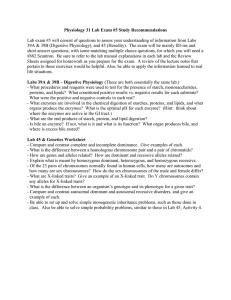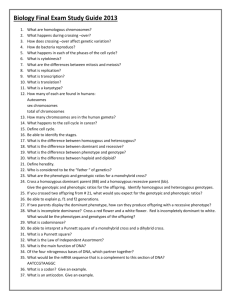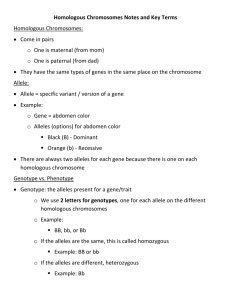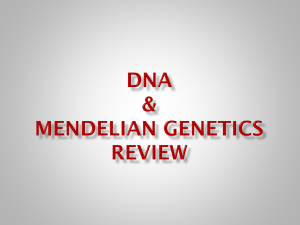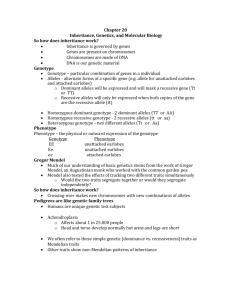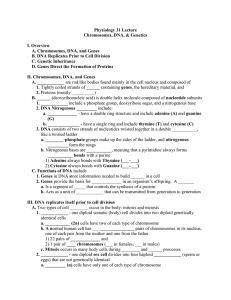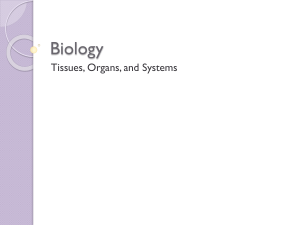Lab Exam 1 Study Guide
advertisement
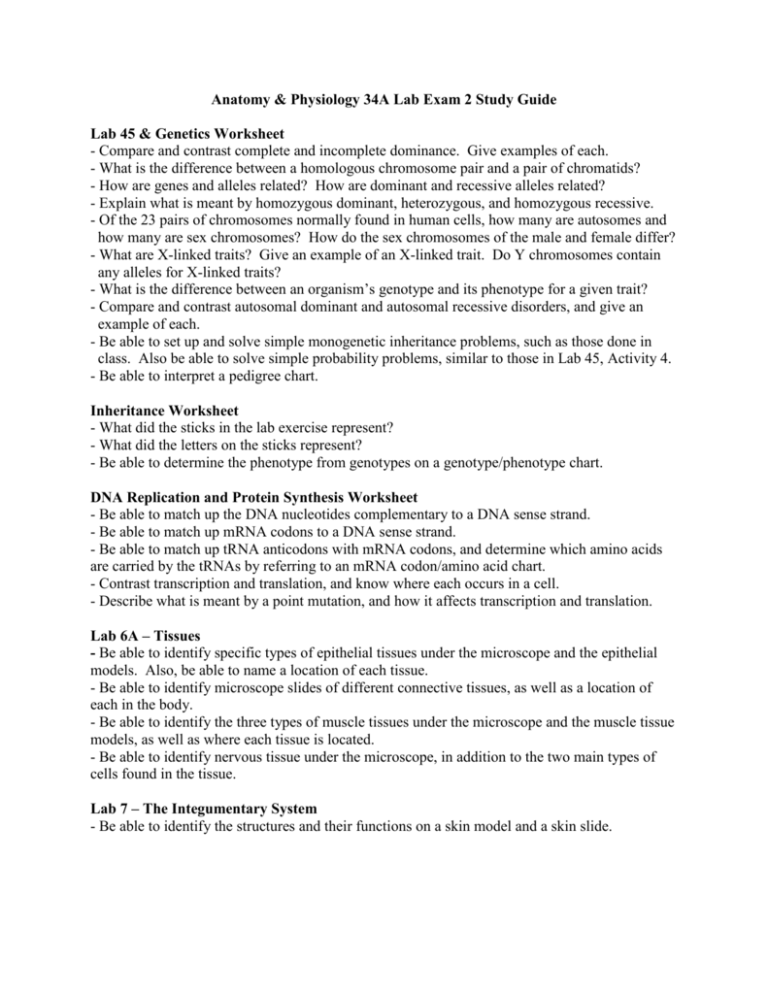
Anatomy & Physiology 34A Lab Exam 2 Study Guide Lab 45 & Genetics Worksheet - Compare and contrast complete and incomplete dominance. Give examples of each. - What is the difference between a homologous chromosome pair and a pair of chromatids? - How are genes and alleles related? How are dominant and recessive alleles related? - Explain what is meant by homozygous dominant, heterozygous, and homozygous recessive. - Of the 23 pairs of chromosomes normally found in human cells, how many are autosomes and how many are sex chromosomes? How do the sex chromosomes of the male and female differ? - What are X-linked traits? Give an example of an X-linked trait. Do Y chromosomes contain any alleles for X-linked traits? - What is the difference between an organism’s genotype and its phenotype for a given trait? - Compare and contrast autosomal dominant and autosomal recessive disorders, and give an example of each. - Be able to set up and solve simple monogenetic inheritance problems, such as those done in class. Also be able to solve simple probability problems, similar to those in Lab 45, Activity 4. - Be able to interpret a pedigree chart. Inheritance Worksheet - What did the sticks in the lab exercise represent? - What did the letters on the sticks represent? - Be able to determine the phenotype from genotypes on a genotype/phenotype chart. DNA Replication and Protein Synthesis Worksheet - Be able to match up the DNA nucleotides complementary to a DNA sense strand. - Be able to match up mRNA codons to a DNA sense strand. - Be able to match up tRNA anticodons with mRNA codons, and determine which amino acids are carried by the tRNAs by referring to an mRNA codon/amino acid chart. - Contrast transcription and translation, and know where each occurs in a cell. - Describe what is meant by a point mutation, and how it affects transcription and translation. Lab 6A – Tissues - Be able to identify specific types of epithelial tissues under the microscope and the epithelial models. Also, be able to name a location of each tissue. - Be able to identify microscope slides of different connective tissues, as well as a location of each in the body. - Be able to identify the three types of muscle tissues under the microscope and the muscle tissue models, as well as where each tissue is located. - Be able to identify nervous tissue under the microscope, in addition to the two main types of cells found in the tissue. Lab 7 – The Integumentary System - Be able to identify the structures and their functions on a skin model and a skin slide.
